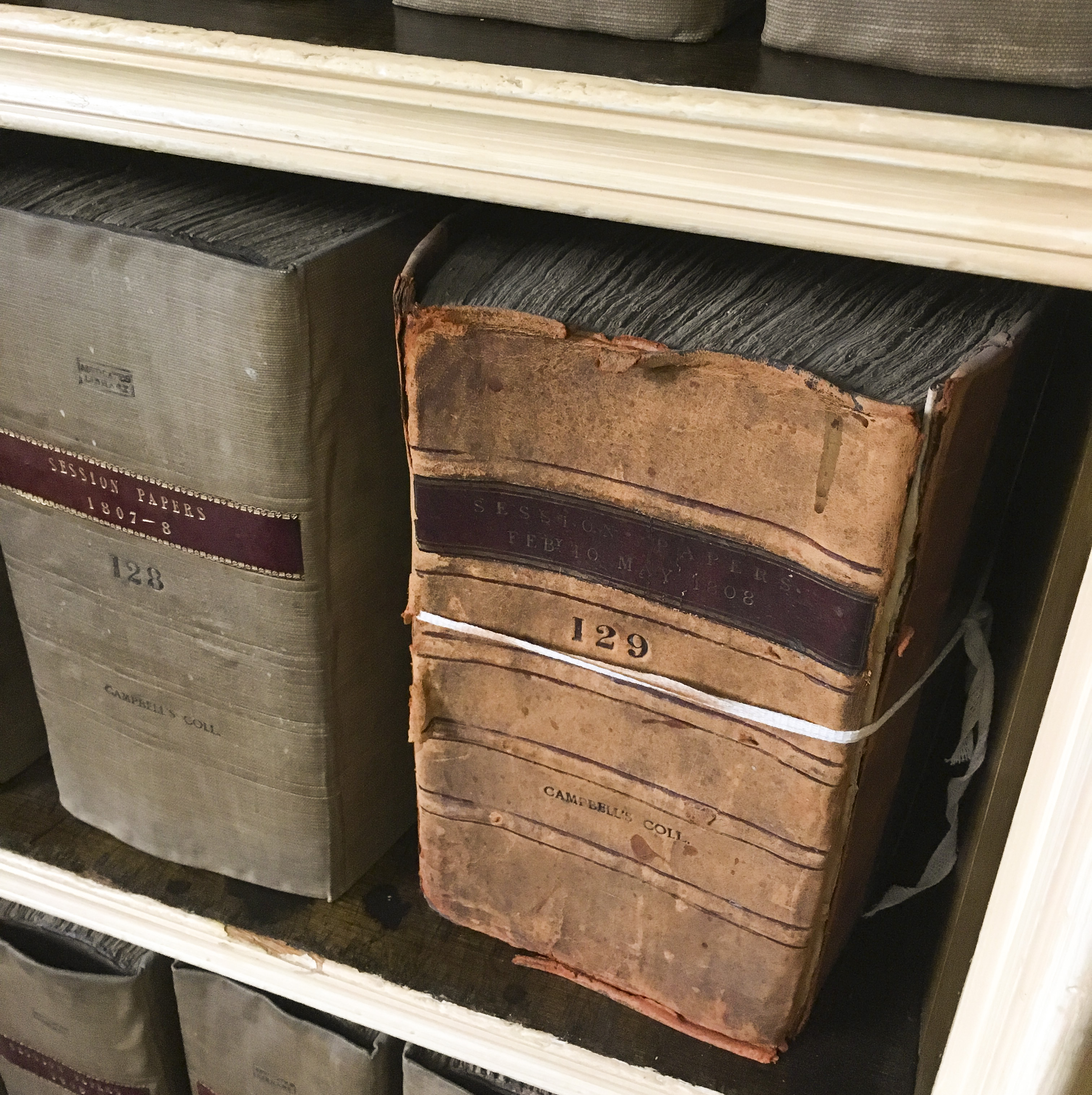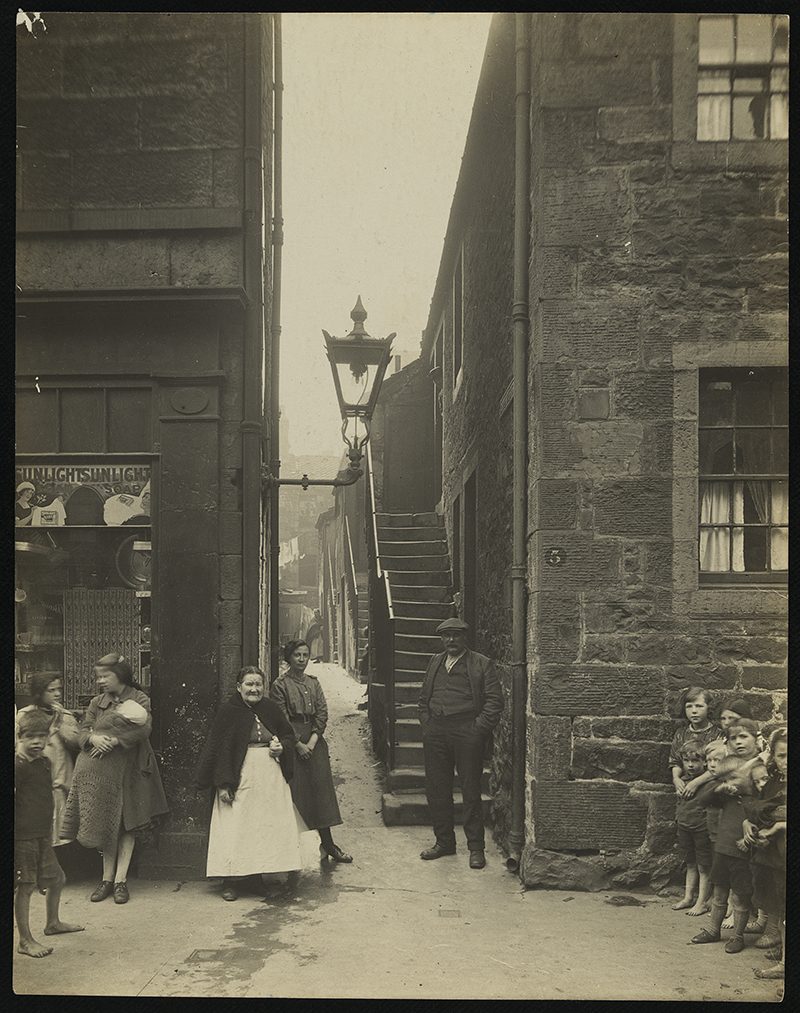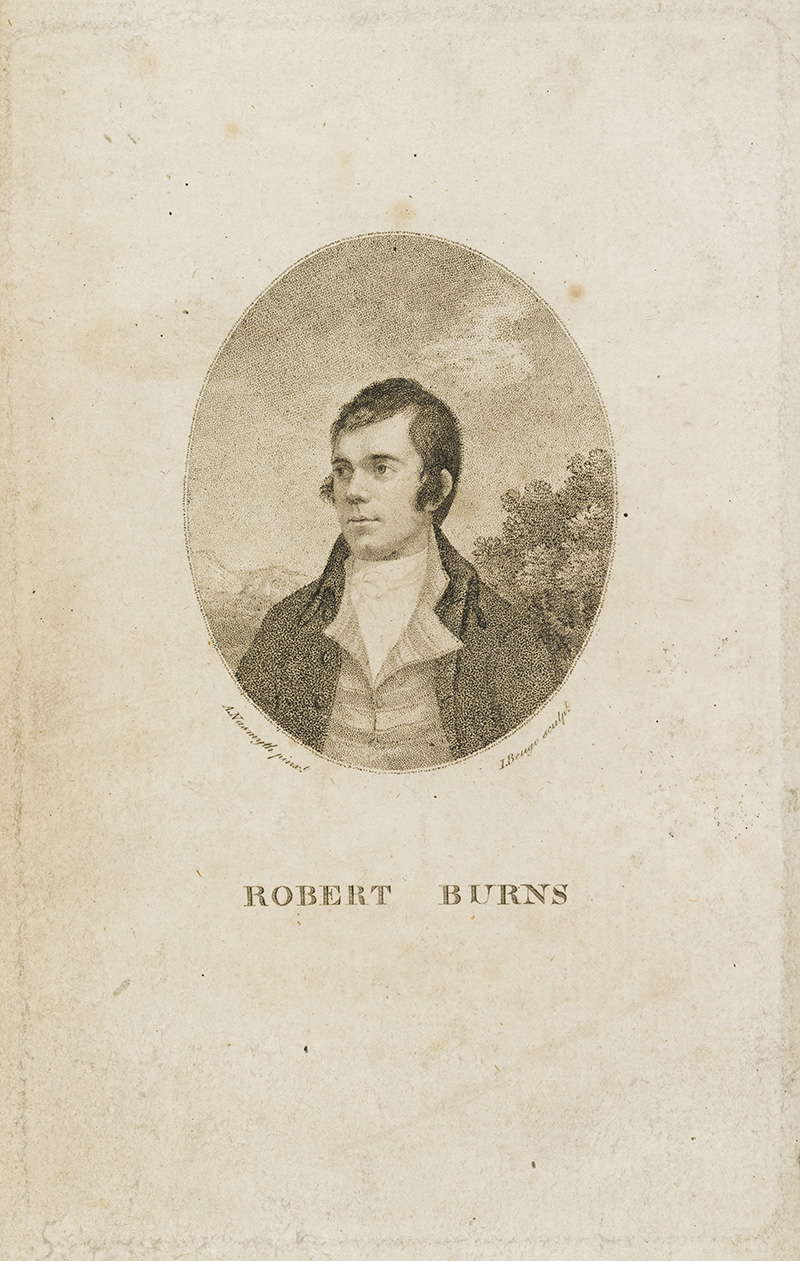 Stories beget stories – it’s one of my favourite things about them – and archives are built on precisely this strength. Archival collections, like those at the University of Edinburgh, do not simply store and preserve artefacts, but actually become a medium through which stories, both existing and those yet to be told, can find a voice. As these musings might already indicate, I’ve been recently reminded of the centrality of stories to archives through my time as a volunteer in the Digital Imaging Unit working on various papers related to Rachel Erskine, née Chiesley (bap.1679-1745), or, as she is more infamously known, Lady Grange.
Stories beget stories – it’s one of my favourite things about them – and archives are built on precisely this strength. Archival collections, like those at the University of Edinburgh, do not simply store and preserve artefacts, but actually become a medium through which stories, both existing and those yet to be told, can find a voice. As these musings might already indicate, I’ve been recently reminded of the centrality of stories to archives through my time as a volunteer in the Digital Imaging Unit working on various papers related to Rachel Erskine, née Chiesley (bap.1679-1745), or, as she is more infamously known, Lady Grange.
Category: <span>Browse by School</span>
 At present I am working on a pilot project, digitising the Scottish Court of Session Papers. The collection is held across three institutions; The Advocate’s Library, The Signet Library and the University of Edinburgh’s Library and University Collections. The collection itself consists of circa 6500 volumes, comprising court cases which span the 18th and 19th century.
At present I am working on a pilot project, digitising the Scottish Court of Session Papers. The collection is held across three institutions; The Advocate’s Library, The Signet Library and the University of Edinburgh’s Library and University Collections. The collection itself consists of circa 6500 volumes, comprising court cases which span the 18th and 19th century.
The aim of the pilot is to determine the most effect digitisation methods for these materials with a view to a potential mass digitisation project covering the entire collection. The digitisation tests and experiments I have been undertaking have raised the many challenges that such a large project would present, namely around the issue of recording metadata and which digitisation practices to employ in relation to the condition and size of any particular volume.
During a photogrammetry training session with Clara Molina Sanchez, we were recommended to choose objects with a matt surface, small to medium in size, and which didn’t have many holes or occlusions. We settled on a Gandharan Buddha from the Art Collection, a Paolozzi maquette from the Edinburgh College of Art collection and, just to test what would happen, a thigh bone trumpet wrapped in shiny metal filigree from the Musical Instruments collection.
This year’s conference was hosted by The Imperial War Museum London. Diane Lees Director-General of the Imperial War Museums opened this year’s conference with the idea that “Photography delivers the…
Following on from a visit from the Confucius Institute in September, it was agreed we should digitize our volume of photographs from Lord Elgin’s 1860 military campaign in China. Our…

Last month I was asked to take some photos of the McEwan Hall which is currently undergoing a major redevelopment to bring it into the 21st century. Having previously photographed Rowand Anderson’s architectural drawings for the building, I have long been looking for excuse to see inside and was delighted to have this chance. This huge auditorium has a seating capacity of 2000 and was presented to the University in 1897 by the Brewer and Politician William McEwan. We have a lovely illustration in the collections of a holly festooned McEwan giving the Graduation Hall to the University on a platter, with Old College’s golden boy in the background.
 When Fraser Parkinson first contacted us about the collection of historic photographs of Leith that he had been entrusted with, my colleagues and I at the Centre for Research Collections were very excited. The photographs were taken to show the slums of Leith prior to the ‘Edinburgh (Leith) Improvement Scheme of 1924’, where large areas were to be cleared and rebuilt. Fraser tells us that:
When Fraser Parkinson first contacted us about the collection of historic photographs of Leith that he had been entrusted with, my colleagues and I at the Centre for Research Collections were very excited. The photographs were taken to show the slums of Leith prior to the ‘Edinburgh (Leith) Improvement Scheme of 1924’, where large areas were to be cleared and rebuilt. Fraser tells us that:
‘The Town Council Minutes of 3rd April 1924 propose the demolition or reconstruction of ‘certain houses, courts, and alleys unfit for human habitation’.
The concerns of William Robertson, Medical Officer of health for the City and Royal Burgh of Edinburgh, were that the
‘narrowness, closeness and bad arrangement, or the bad condition of the streets and houses, or the want of light, air, ventilation or proper conveniences or other sanitary defects are dangerous or injurious to the health of the inhabitants of the buildings in the said Areas, or of the neighbouring buildings.’
The scheme involved large-scale demolition in this area of Leith, and the re-housing of most displaced residents out-with the areas covered by the scheme.
These photographs were taken as a record of the area at this time by the City Council. They provided the photographic evidence of the conditions that presented significant risk to public health at this time.’

The most important manuscript collection at the University of Edinburgh has long been acknowledged to be the Laing Collection. This treasure trove was donated to the University of Edinburgh in 1878 by David Laing (1793-1878) and contains a startlingly vast array of texts and artefacts. To gloss this diversity only briefly, the University’s description of the Laing collection attests that one can find more than 100 Western medieval manuscript books, a 9th-century Koran, over 3000 charters, manuscript poems, texts, and letters written by Robert Burns (1759-1796), the lovely illustrated “Album Amicorum” (book of friends) by Michael Van Meer (?-1653), and poetry by Elizabeth Melville (1582-1640). Even the handlist for the collection is itself an archival artefact of sorts, having been drawn up in 1878 at the time of the bequest and bearing traces of additions and corrections made over the years since.
As important as the Laing collection is though, I’ll admit that until a couple of months ago, I didn’t know much about it and I certainly hadn’t spent any time delving into what it has to offer. I’m an English literature PhD here at the University of Edinburgh and my research focuses on archives, digital humanities, and, in particular, the study of idiosyncratic texts, like concrete poetry and scrapbooks. I like that these works challenge traditional literary classifications and give some pause when users must decide how to read them, digitise them, or otherwise interpret them. These interests led me to volunteer with the DIU, where I have been working to enrich the descriptive metadata of digitised items from the University’s Special Collections and Library holdings. This is also what finally led me to the Laing collection.
Recently Art Collections Curator, Neil Lebeter, and I made a short video interview with Professor Bob Fisher and Phd student Alex Davies of the Informatics Department. Bob and Alex have been working with the images I produced of the Eduardo Paolozzi mosaics within the DIU (for an introduction to the project click here). This cross departmental work seems particularly fitting as Paolozzi had close ties to the Informatics department. This relationship is visible in the form of several Paolozzi sculptures dotted about the Informatics building.
Using their combined expertise, Bob and Alex have been employing a number of image processing techniques on the images of the individual mosaic fragments in line with images of the original mural design, in situ at Tottenham Court Road Tube Station, London. This is to assess what percentage of the original mural we possess and how accurately it could potentially be pieced back together. The interview provides an insight into their work processes, the challenges, and uniqueness, of this particular project and the results they have found to date. It is an interesting watch!
 With the 400th anniversary this year of the death of one of our greatest and most influential playwrights, William Shakespeare, I found myself cropping images of some of his first printed quartos for the creation of an e-reader as part of the Shakespeare image collection. Now existing as high quality e-readers are the plays Love’s Labours Lost (1st Quarto Edition) and Romeo and Juliet (2nd Quarto Edition), both of which are used as part of the collaborative project concerning Shakespeare’s printed quartos, The Shakespeare Quarto Archive (http://www.quartos.org/index.html). These works themselves have very unique histories and are important in Shakespearean studies for many reasons. Their place in the Special Collections in the University of Edinburgh Library is invaluable.
With the 400th anniversary this year of the death of one of our greatest and most influential playwrights, William Shakespeare, I found myself cropping images of some of his first printed quartos for the creation of an e-reader as part of the Shakespeare image collection. Now existing as high quality e-readers are the plays Love’s Labours Lost (1st Quarto Edition) and Romeo and Juliet (2nd Quarto Edition), both of which are used as part of the collaborative project concerning Shakespeare’s printed quartos, The Shakespeare Quarto Archive (http://www.quartos.org/index.html). These works themselves have very unique histories and are important in Shakespearean studies for many reasons. Their place in the Special Collections in the University of Edinburgh Library is invaluable.
